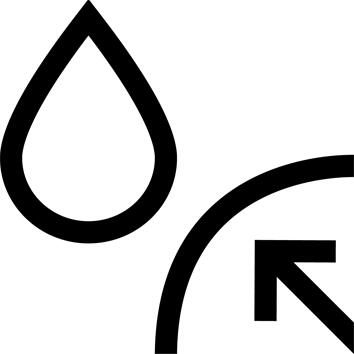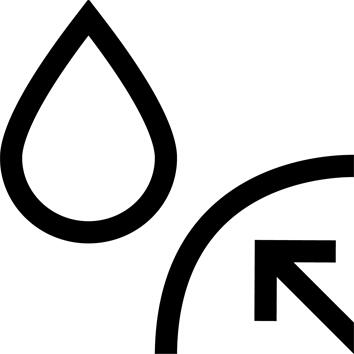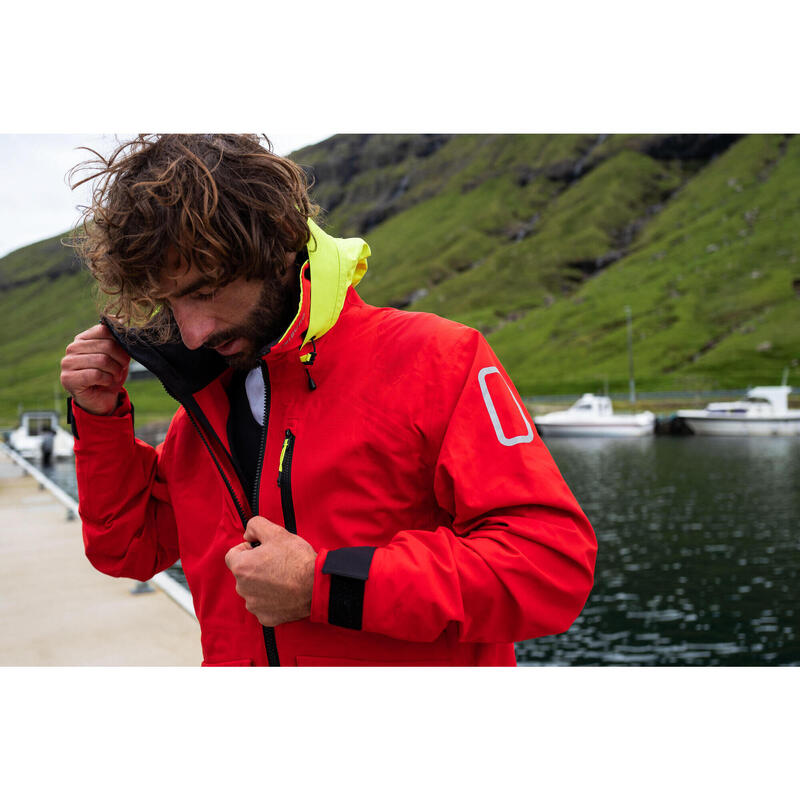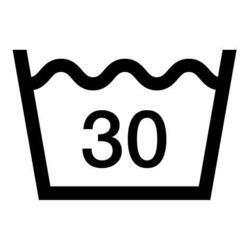Waterproofing 1/2
The resistance of a fabric to water pressure is measured in mm water column (test based on ISO 811). The higher the pressure, the more waterproof the fabric.
Here are the waterproof values:
Component resistant to a water pressure of 12,000mm Schmerber. This is equivalent to the average pressure exerted by water during a downpour.
The jacket's water resistance has been tested under a rainfall of 100 liters of water/m²/hour for 3 hours.
Waterproofing 2/2
- Fleece-lined high collar
- Injected plastic zipper to prevent salt oxidation
- Water-repellent components (water runs off fabric).
- 100% taped seams.
- Center opening with gutter underflap for optimum waterproofing.
Hood
The hood doesn't stow away in the collar, but is attached to it. Thanks to its weight, it doesn't flap in the wind.
Hood fully adjustable in height and depth.
Visor with headband for a high level of protection and better support.
The high stand-up collar effectively protects the lower face.
Pockets
2 accessible pockets behind the cargo pockets, with zips.
2 cargo pockets on the lower part of the jacket for VHF, boom vang, cap... In the right-hand pocket, a small inside pocket for a knife or shredder.
1 outside pocket on the left breast for a phone or other items, zipped
1 inside pocket on the right breast for a phone or other items, zipped
ATTENTION: pockets are NOT WATERPROOF.
Front zipper
Full-length YKK waterproof zip with inner flap and gutter for protection from wind and water.
Double slider for opening from the bottom of the jacket. To ensure optimum engagement of the double central opening slider, check their alignment.
Soft fabric flap at the top of the collar to protect the chin.
Protection - sleeves
2 sleeves per sleeve, covering the wrist and adjustable by Velcro to limit water ingress.
The first sleeve is made of a smooth, comfortable component to prevent water ingress and make it comfortable against the skin. Velcro adjustment.
The second sleeve can be worn over a glove.
To unzip the jacket more easily, open it as wide as possible.
Breathable fabric
Pour savoir si un tissu est respirant, on mesure sa résistance évaporative RET (norme ISO 11092). Plus la résistance est faible, plus le tissu laisse s’échapper la vapeur d'eau et donc plus le tissu est respirant.
On considère que si :
RET < 9 = tissu très respirant
9 < RET < 12 = tissu respirant.
Le RET de la veste Sailing 500 est inférieur à 12.
Water-repellent information
A fabric's water repellency is its ability to let water slide off its surface without absorbing it.
This means your jacket won't become waterlogged, remaining light and breathable. Water repellency is achieved by a treatment applied to the outer face of the fabric, but in use these properties can be altered.
Water repellency can be reactivated by tumbling the jacket for 10 minutes at low temperature.
How do I wash my jacket?
To preserve water repellency, we recommend that you limit the number of washes.
Close all zips and flaps, empty the pockets and then turn the garment inside out to wash inside out. You can wash it on a synthetic program at 30° or 40°C with your usual detergent. Do not use fabric softener, which could damage the garment's original performance, or bleach. Very important: rinse thoroughly or use a double rinse.
How do you reactivate the water repellency of your jacket?
Drying is essential to reactivate the water-repellent treatment.
We recommend that you let your jacket dry completely in the open air, flat on a drying rack. Never dry your jacket directly on a radiator.
Then tumble dry on the synthetic program for a short time (10 to 15 minutes) before putting it back on. Be careful not to over-dry the garment.















